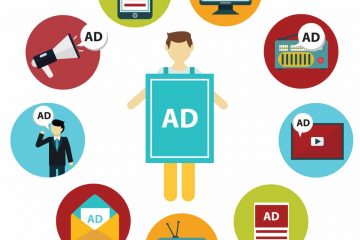Behavioral Segmentation for B2B Businesses
Gone are the days when marketing was a one-way street. All companies had to do back in the day was write great copy carefully, avoiding the slightest indications of a negative quality, put some amazing strategically taken pictures of their products and get it out to get customers.
But now, customers have evolved from being mere listeners. Businesses are at a point where they can engage proactively with customers based on their needs. Over 80% of B2B customers expect businesses to understand their unique needs and cater to them.
Perhaps what’s more important and needs addressing right away is the customers have become a lot more aware of marketing shenanigans, more knowledgeable about brand operations, and more conscious about their product choices. Customers are also now leaning more towards self-serve on low-ticket B2B purchases like SaaS purchases. They would only engage with sales and support after doing homework from their side and have already made their minds.
With more data available, the bar has truly been raised, and there are more opportunities now to get into a customer’s journey. Every milestone of the customer journey can be worked out at a microscopic level now, thanks to data-driven marketing and powerful B2B behavioral segmentation.
Rise of data-driven marketing and the need for segmentation
Customers don’t just want to know about features. They want to know what’s in it for them and how it helps them. As Simon Sinek says, you have to start with ‘Why’.
This means that your message needs to resonate with them, and your content should strike them and tell them why they should consider you.
In B2B, there is a need to constantly communicate with the customer at all stages of their buying process and remind them of what they stand to gain from purchasing the product or service. Once they are through to the stage where they start comparing their options, you need to give them a significant reason to choose your product over your competitors.
This is where data-driven marketing plays an important role. A customer’s behavior will help you understand their motivation. Combine this information with their business profile, and you get the full picture. Using intelligent user analytics software (e.g., Salespanel), companies can gauge different types of customers, analyze each of their behavioral patterns on digital channels, and provide relevant content to help them make their decisions.
Statistics suggest that customers are very likely to switch brands that don’t really speak to their needs or don’t resonate with them. As much as 52% of them state that they would definitely switch if they are not getting custom messages and offerings.
And 57% of them would apparently switch to a competitor if they gave them a better experience.
It is being established that a few years down the line, customer experience is what is going to differentiate you from your counterparts. And, companies are increasingly getting on board with the concept. According to reports, data-driven marketing is one of the top priorities for marketers. More than 40% of organizations are preparing to increase their data-driven marketing budgets in the upcoming months, out of which customer segmentation and behavioral analysis are the top 2 intentions.

The need to be proactive…
An important thing to remember is that your competitor is just as prompt with their customer services as you are. To gain a competitive edge, you need to be proactive with your customers’ needs rather than being reactive.
It means that, while it is useful to look at data once your campaign ends, it is more efficient to manage marketing in real-time proactively. And, this is doable on any scale, as we have discussed in this article. Intelligent tools will allow you to accurately predict and analyze customer behavior and also give you insights on industry trends, competitor activity, etc., allowing you to take proactive action and impress your customers by fulfilling their needs and requirements as they progress through the buying process.
Companies typically use behavioral segmentation to understand and group customers with shared attributes to craft more personalized and effective marketing campaigns. With the help of smart tools, you can analyze customer behavior and relate them with motivations. For example, let’s say you are an email marketing software. Your product helps customers send newsletters and also drip campaigns. Now, a lead is researching welcome drip campaigns (not newsletters). He is reading guides related to drip campaigns from your website. What does that tell you? Would he/she be interested in reading about how to set up fancy templates? Or would he/she be interested in learning how to drip customers properly?
Not just that, the behavioral analysis will track leads down the buying process and let you know when a lead is showing purchase intent. With predictive analysis capabilities, B2B behavioral segmentation helps marketers develop proactive relevant content and campaigns to attain maximum effectiveness.
Using behavioral patterns, you can group your leads in different categories, and you can also group based on customer interest. Not just on your website but from external sources as well. Like social media clicks, for example.
Or if you consider event marketing, webinars and podcasts can be organized, and email campaigns can then be crafted to invite business professionals to attend the event. Based on location information and other details indicating key decision-makers in prospective companies, the campaign can be sent out to relevant customers carefully segmented with the help of behavioral analytics.
How behavioral analytics help understand customer requirements
According to a MailChimp’s survey, segmented email campaigns have 14.31% higher open rates than non-segmented campaigns or generic campaigns. They also apparently generate 101% more click-through rates, at the same time, much lesser bounce rates and unsubscribe rates.
Quite evidently, customers like and prefer emails that are more tailored to their specific state of affairs, needs, and requirements. Segmentation effectively helps identify common traits and address them with relevant content, offering ultra-personalized experiences.
Like the example mentioned previously, several behavioral indicators can help you understand intent, both positive and negative. You can dig deeper into engagement durations, email engagements, button clicks, etc. A set of visitors taking a product trial after they have seen your pricing may indicate that they are okay with your pricing. Similarly, customers clicking into your website from similar locations or similar industries, commonly noticed to bounce on reaching the pricing page, can imply misalignment with pricing for that particular segment. To tackle such situations, many companies offer discounts based on company size or location.
Behavioral analytics helps to clearly understand and address customer requirements very promptly and proactively by giving you the inside knowledge you need, which you can use smartly to your advantage.
Types of customer behavior analytics
Customer behavior, as a broad concept, encompasses several other things stemming mainly from the buying process. At different stages of the buying process, starting from identifying the need to evaluate options and finally making the purchase, several types of customer behavior patterns can be tracked and utilized.
Buying behavior
Based on the buying behavior alone, experts have identified four main customer behavior types.
- Complex buying behavior – a customer is highly and completely involved in the buying process, investing time in learning the attributes and factors to look into, narrowing down options, and finally making a choice.
- Dissonance reducing buying behavior – a customer is highly involved in the buying process but doesn’t know or notices any significant differences between brands. He or she will purchase fairly easily but will seek confirmation validation after purchase. In B2B, this might happen when a customer is trying out a new product, and competing products offer similar things. Like choosing between Zoom and Hangouts, for example, for audio calls.
- Habitual buying behavior – a customer has very little involvement in the buying process and makes purchases out of habit. This is NOT something that is usually found in B2B purchases.
- Variety seeking buying behavior – a customer makes purchases to try something new, not necessarily induced by need.
Product behavior
Product behavior pertains to information regarding how the customer uses the product, including what features are most used, what features are not used, what challenges are being faced on usage, what features were used but discontinued, what is the general feedback, etc.
For SaaS businesses, this brings significant power as they are able to track the product usage of each customer thoroughly. Businesses use a product qualifying leads the process to find out prospects who are benefiting from using the product trial and are likely to purchase.
Purchase intent
Purchase intent is the willingness of a prospective customer to purchase a product or a service. For example, if a person is actively using your product trial and has added credit card information, he/she has purchase intent. Furthermore, if a prospect enquired about the price on social media or a website visitor clicked on a button to purchase but left without completing the purchase, they can most definitely be identified as leads with a definitive intent to purchase. Such leads need to be pushed to sales to get the deals closed.
Engagement level
The engagement level shows how actively a customer is engaging with your product content. Do they read your content frequently? Do they download any resources from your website? Have they chatted with any of your customer service representatives before? All of this information can be utilized to see what gets them to engage so that you can offer more of such content and move them through the sales funnel.
Channel based engagement
Channel based engagement information reveals the popular channels of communication among your audience. For example, suppose a prospective customer seems to be opening most of your emails but does not engage with your social media content ads. In that case, it could likely mean that they are fonder of email-based communication. Based on channel-based information, you can craft suitable marketing campaigns, whether on social media, email, etc. You can also analyze these engagement patterns for optimizing the experience of future customers.
Buyer stages
Depending on where a lead is in the buying stage, relevant content can be created and sent to achieve the desired outcome. For example, a visitor constantly checking out product pages on your website but never going into your pricing page possibly indicates a buyer in the need identification stage or the information comparing stage. Such a prospect is an Information Qualified Lead and needs more nurturing with great informative content.
With a behavior-based automation enablement software like Salespanel, you can connect your campaigns with your CRM and show content based on deal stage.
What can be tracked?
You can pretty much track all behavior involving your product and channels while being compliant with data regulations. For example, if you use Salespanel, you can track page visits, visit duration, event views, button clicks, and pretty much anything you would like to track on your website. Outside of your website, you can track email engagement and social media engagement. You can know how your leads found you and what keywords they searched for (Google Ads). And, you get this information for each visitor, each lead and each customer. If you have a product that runs on your website itself, you can also track how users engage with your product. All of this is provided in real-time for segmentation and marketing automation, which we will discuss now.
Behavior-Based B2B Segmentation
Now that the data is tracked, you can set up behavioral profiles that are important for you and segment leads based on those behavioral profiles. For example, you can segment all leads who visited your pricing page or added payment information. You can segment leads based on how much time they spend on your website or how actively they are using your product.
Every data point that has been mentioned in the previous section can be used for segmentation. Once you segment these users, you can check reports of contacts in the segment or run marketing automation. All of these can be facilitated by Salespanel.
Behavior-based marketing automation
Once you create your segments, you can trigger marketing automation workflows when leads get added to the segment. Having real-time segmentation helps you automate these processes in real-time. For example, you can trigger highly targeted website events or chat popups based on your segments using Salespanel. You can get leads added to email campaigns based on the segments they are part of.
The best marketing automation solutions provide essential analytics and many more insights into B2B customer behavior spanning different digital channels, enabling you to provide seamless and personalized customer experiences. Ultra-personal marketing is one of the biggest trends in the B2B industry in 2021, driving more companies to invest in comprehensive automation solutions.

According to a survey, 56% of customers are likely to be more loyal to a brand that aligns with their values or “gets them.” This inevitably necessitates behavioral segmentation and automation based on behavioral analytics. To gain a competitive edge, buying intelligent marketing automation solutions that provide the tools to improve efficiency and facilitate strategic analysis of customer behavior is the way to go forward.
Sell more, understand your customers’ journey for free!
Sales and Marketing teams spend millions of dollars to bring visitors to your website. But do you track your customer’s journey? Do you know who buys and why?
Around 8% of your website traffic will sign up on your lead forms. What happens to the other 92% of your traffic? Can you identify your visiting accounts? Can you engage and retarget your qualified visitors even if they are not identified?



